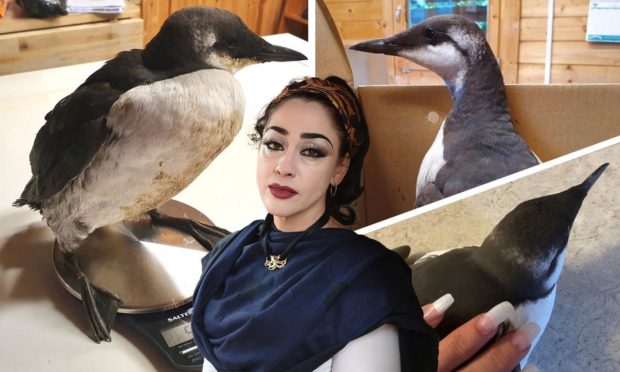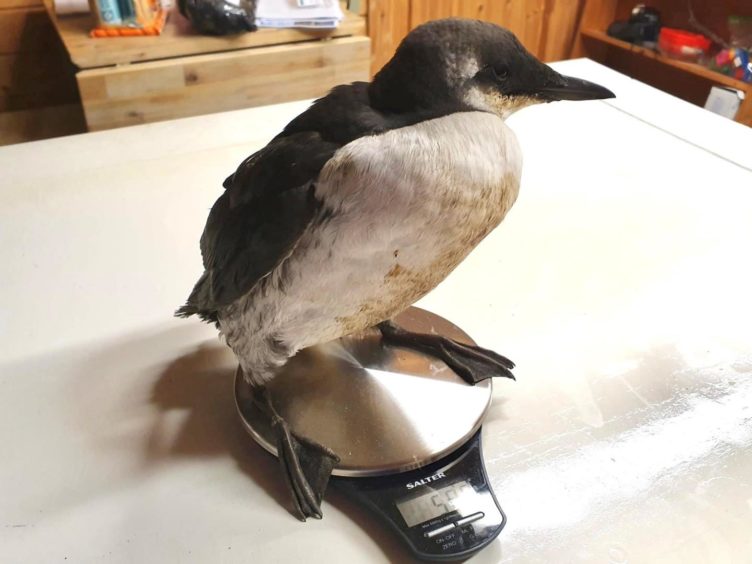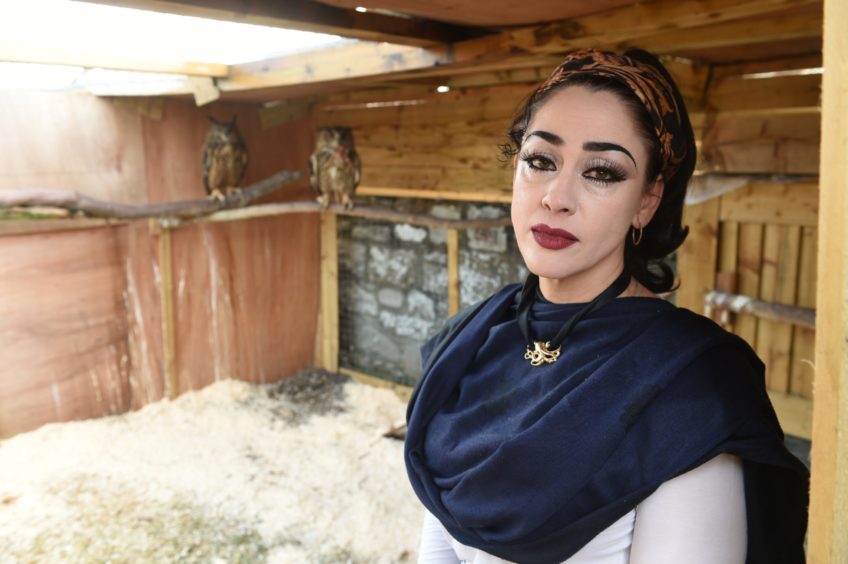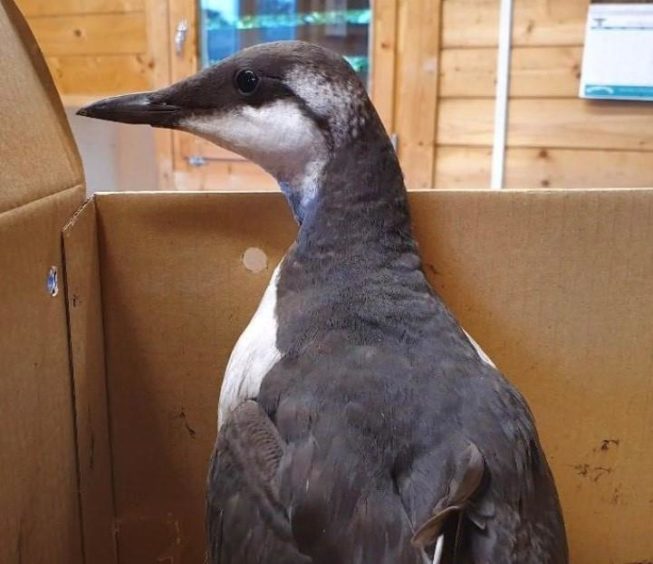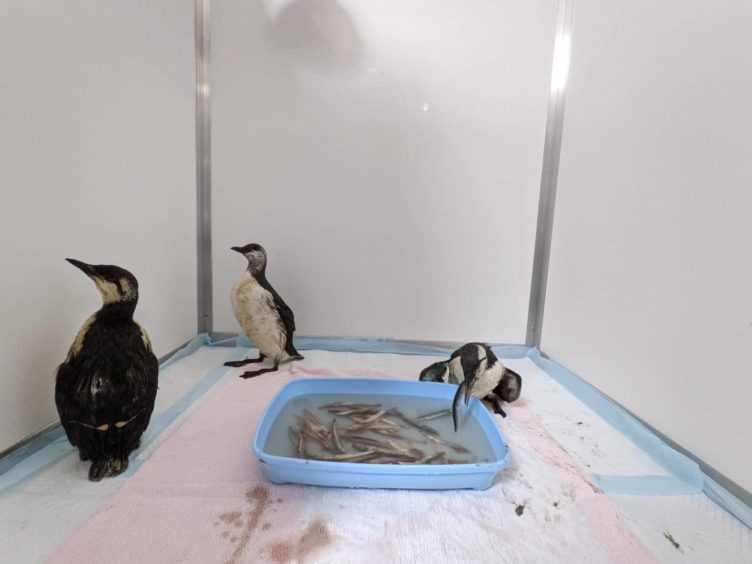A rescue centre owner says the mystery of why hundreds of emaciated seabirds keep washing up on Scottish shores has been like “living in hell”.
In recent weeks, there has been an unusual increase in reports of birds either starving or deceased on beaches all along the east coast, all the way from “Orkney to Northumberland”.
Mostly young guillemots, the animals have been found to be severely underweight, however, no concrete explanation of why they’re starving has yet been found.
Lady Hadassah Broscova-Righetti, founding director of the Blue Highlands Bird Rescue centre in Brora, said her organisation has taken in “several hundred” seabirds over the past few weeks, and they have been “absolutely emaciated, properly starving, and often exhausted beyond recovery”.
‘You’re essentially on a death watch and you feel helpless’
Of the recent intake of surviving birds, dropped off to the centre from beaches all the way from Dornoch to Thurso, around 90% of them have died.
The ongoing situation has been hard for the centre’s staff, who pride themselves on releasing recovered birds back into the wild.
Lady Broscova-Righetti said: “It’s just been terrible for us, it’s been truly horrific, honestly.
“It must be at least triple what we’ve had at this time compared to previous years.
“In previous years we’ve been able to rehabilitate quite a lot of them and get them back into the wild, but this year it’s different.
“Many of them, they come in and there’s nothing that can be done, and their bodies are rejecting all the food, it’s horrifying, you’re essentially on a death watch and you feel helpless.
“It’s like fighting an invisible enemy, because we can’t stop whatever it is that’s making this happen.”
Within one three-day span last week, Blue Highlands took in 12 guillemots, and all died within 12 hours except one, which is in critical condition and weighing around just 500g, far below the healthy weight for a healthy animal.
Lady Broscova-Righetti added: “It’s not a simple case of a bird flying into a window, or getting caught in fishing line, there’s no tangible thing to blame here, it’s something that’s out of our ability to directly address.
“It’s like living in hell, and all we can do is comfort them at the end, give them pain medication, keep them hydrated, and give them a nice warm place to die.
“And that’s not our primary function.”
The rescue centre has managed to successfully reintroduce a worryingly small percentage of recent guillemot residents back into the wild, and each release has been an emotional moment for the team.
‘Bizarre’ behaviour like swimming up rivers and getting close to humans reported
Francis Daunt, a seabird ecologist with the UK Centre for Ecology and Hydrology (UKCEH), explained that not only has there been an increase in deaths being reported along the east coast, but there have been a number of sightings of “bizarre” behaviour.
Totally surreal encounter with 18 guillemots on this short section of the R. Teith – calling, standing around on the banks, and sometimes flying. Local dippers confused. Also 1 osprey & 1 red kite @UpperForthBirds @UKCEHseabirds pic.twitter.com/VnHsYNExls
— Tom Finch (@tomfinch89) September 11, 2021
Guillemots have been spotted going up rivers, which is very unusual for seagoing birds, and getting unusually close to humans, which they tend to avoid.
He said the strange sightings indicate the desperation of the animals.
Mr Daunt said: “What’s happened in the past three weeks is that guillemots have been turning up dead in quite large numbers on the east coast, spanning from Orkney to Northumberland.
“Not only that, but we’re seeing a lot of strange behaviour by live birds.
Lots of reports of unusual #Guillemot behaviour over the past week, with many birds inshore & some dying/dead. Received this incredible footage from @cameronphair filmed at #Portobello which appears to show a bird taking advantage of #sandeels @UKCEHseabirds #seabirds pic.twitter.com/0EIc7Y1vrK
— Rich Howells (@howellsrj) September 10, 2021
“Guillemots are marine birds, they never go up rivers, and you’ve got bird watchers who have watched their local stretch of river for more than 20 years who are seeing guillemots for the first time, so there’s something very funny going on.”
What are some of the potential causes?
He explained there are a number of potential causes for the mass deaths and starvation, but right now the true cause, or causes, remains unknown.
A number of potential reasons have been pointed to, including disease, climate change, contaminants, or the behaviour of prey species.
Mr Daunt continued: “The dead birds are emaciated, they are literally skin and bones. You feel them and there’s nothing to them, we picked up some corpses, and they are about half the weight they should be, which is extraordinarily light.
“The key question is what are they dying from?
“Is it straight starvation because there’s not enough food, or is there some other factor, like disease, that ultimately leads to death by starvation?
“The other issue is this paradox of people seeing birds feeding right up on the coasts, flocks of birds feeding on fish in large numbers.
“So what’s going on? Because if they’re feeding on fish, normally a seabird would be fine, they’re getting their food, and so why are they dying?”
What can be done?
He said although there are no satisfying answers yet, the UKCEH is working to find them.
Mr Daunt continued: “The marine environment is so hard to study, you can’t just walk into it like you can a woodland and measure all the plants, so we take a very considerate, long-term view and measure what we can, and do our best.
“So we will hopefully unearth the cause, but in all honestly quite often they do remain a mystery, these curious events.”
